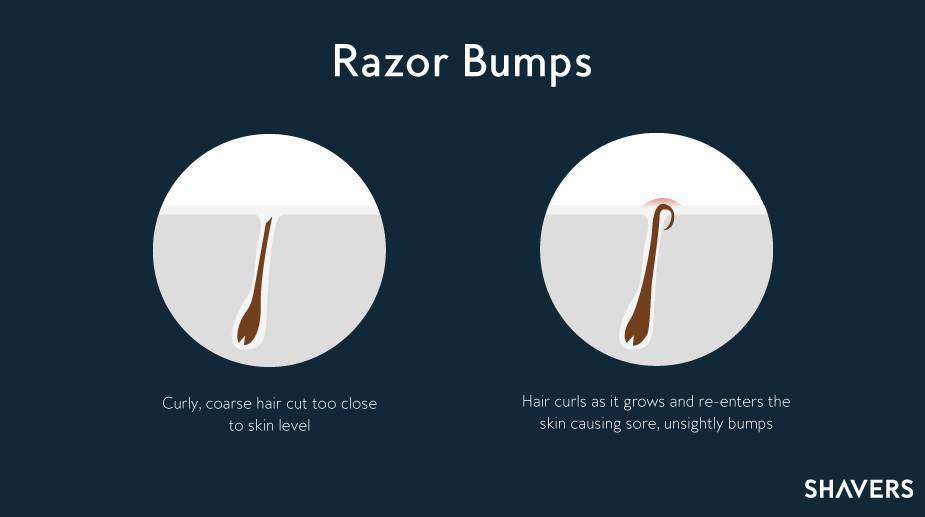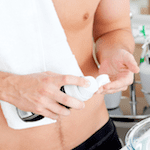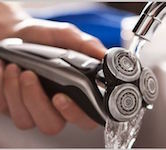Prevent Ingrown Hairs and Razor Bumps - Shaving Tips for Black Men
Written by Advice Team on April 28, 2017
Most men who shave have suffered from razor bumps to some degree at one point or another, but some men are more susceptible than others. Men with Afro-Caribbean skin in particularly seem to suffer from them more often than men of other races, due to the fact that their hair is generally naturally curly in nature (curly hair is 50 times more likely than straight hair to become ingrown), is coarser and more wiry. Up to 80% of black men live with the problem of ingrown hairs and razor bumps.
Shaving tips for black men
Razor bumps are a recurring condition which appears when a hair that has been cut off close to the surface of the skin curls as it grows and re-enters the skin, causing sore, swollen unsightly bumps. Shaving exasperates the problem as the blade literally sharpens the hair ends as it cuts, making it easier for them to penetrate the skin.
Razor bumps are unpleasant, itchy and painful and can cause inflammation, infection and scarring. At best they can make shaving uncomfortable and at worst they can make it to virtually impossible to shave altogether. Growing a beard is an obvious solution, eliminating the razor bump worries and ingrown hair issues altogether but for men who favour a smooth face and neck or who need to be cleanly shaved for professional reasons, this might not be an option.
For black men who choose to shave here’s how to prevent the development of ingrown hairs, reduce the instance of razor bumps, ease some of the discomfort and soothe ingrown hairs.
Wet shaving
1. If you are wet shaving soften your facial hair by taking a hot shower or covering your face and neck with a warm flannel for 5 to 10 minutes before shaving. If you have particularly sensitive skin follow up with a pre-shave oil designed for sensitive skin to prepare the hair and protect the skin. Next massage a good quality shaving cream into the wet hair, leaving a thick layer to sit on your skin for about one minute to allow it to completely coat the hairs before reaching for your shaver. The cream will further soften the hair ready for cutting and will create a barrier between the blade and your skin.
Choosing the right tool for you
2. Choose your tool carefully. The closer the shave, the worse the razor bumps will be, therefore black men are advised to avoid shaving very close to the skin. Electric shavers tend to cause less ingrown hair and razor bumps than wet shaving due to the fact that the blade does not cut directly at skin level; they are therefore a great choice for Afro-Caribbean men. Alternatively, opt for a single blade manual razor that cuts off hairs around 1mm above the surface of the skin. Stubble is less noticeable on black men than their white or asian counterparts, so it is possible to get a clean-shaven look without a perfectly smooth finish.
-
 81519669 Fusion ProShield Chill FlexBall Razor In stock and ready for dispatch!
81519669 Fusion ProShield Chill FlexBall Razor In stock and ready for dispatch!
If you are prone to suffer razor bumps or ingrown hairs, a foil shaver is generally a better choice than a rotary based shaver. In order to achieve a close cut, rotary shaver heads typically catch the hair and lift it very slightly before cutting. A technique used to allow the heads to cut close to the skin, the act of lifting the hair can sometimes cause it to curl very slightly on release. If your stubble doesn’t need much encouragement to curl, then this is best avoided!
Another viable option is to use a beard trimmer without its comb attachment, just the base trimmer blade direct to the skin. This will give you around 0.5mm of remaining stubble - in reality, this is very little and from a distance, not that indistinguishable from a fully close shave.
Ensuring a sharp blade for shaving
3. Whether you go for an electric shaver or a razor ensure your blades are clean and sharp. Dull blades force you to go over the same area repeatedly, which can lead to irritation and cause razor bumps. When shaving with a razor, discard your blades once they have been used more than 4 or 5 times. With an electric shaver we generally recommend changing blades every 12-18 months, but if you are susceptible to razor bumps you should replace them far more regularly.
Manual razors
4. If shaving with a manual wet razor, always shave in the direction of hair growth. While shaving against the grain will give a closer shave, it is the main culprit for causing pointy, sharp hairs that can burrow back into the skin. Shaving in the hair’s direction reduces both the likelihood of razor burn and ingrown hairs. Avoid pulling the skin taut and don’t go over the same area more than a twice. Most importantly, take your time - shaving slowly and with due care will dramatically reduce the instance of nicks, cuts and irritation, all of which can further aggravate razor bumps.
How often to shave
5. Frequent shaving too close to the skin will trap hairs inside the follicles. Reduce your number of shaves by shaving every other day rather than every day. This gives your skin time to heal, but the hair doesn’t have time to grow long enough to curl back into the skin.
Men's exfoliation
6. Exfoliate your skin with a gentle facial scrub prior to shaving. This will help soften the skin, will remove the top layer of dead cells, and will clear the pores, allowing the hairs to grow out more easily. If you don’t have a facial scrub to hand a hot, wet flannel will do the job just as well.
Post shave care
7. Follow every shave with an application of a rich post-shave product to rehydrate your skin. Go for a product with natural ingredients such as aloe, witch hazel and tea tree to cut down on redness and discomfort, soothe the skin and to help to prevent razor bumps. Steer clear of products that contain alcohol as this will dry skin out the skin and cause further irritation.
Dealing with razor burn
8. If you develop razor bumps, place a clean wet flannel in the freezer or run it under cold running water and apply to the affected area for 10 - 15 minutes to help relieve symptoms. Avoid shaving altogether until your skin fully heals - continuing to shave can lead to infection and permanent scarring.
Razor bumps usually disappear within one week. If you notice that your razor bumps are not going away or if they begin to become severely inflamed talk to your doctor as you may need an antibiotic cream to help clear them up.







